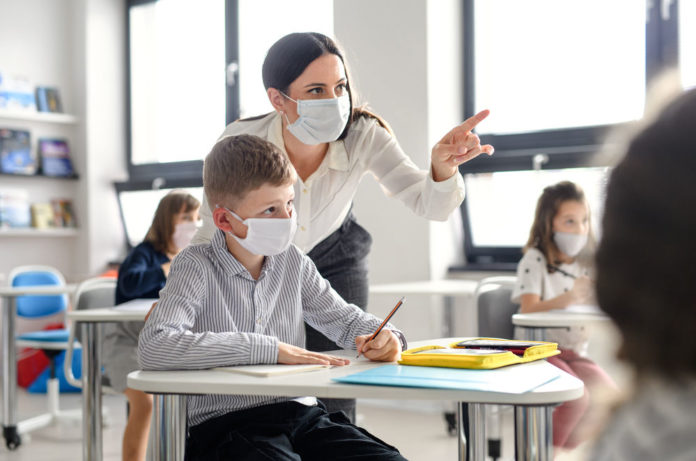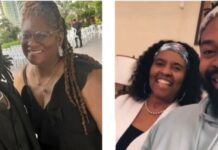
Throughout the world, on university and grade school campuses, in the workplace, in communities and homes, and in the media, issues of sexual identity and gender identity and expression are increasingly “coming out of the closet.” We see young people developing positive identities at earlier ages than ever before.
So during Back to School season, it’s a good time to revisit how we can make schools more welcoming for LGBTQ students, staff, faculty, and administrators.
Related: What do all the versions of the Pride flag mean?
Schools conduct educational efforts around several LGBTQ special events, for example:
- National Day of Silence: a day in mid-April each year when students across the nation take a vow of silence to call attention to the epidemic of oppressive name calling, harassment, and violence perpetrated against LGBTQ students in schools and in the larger society.
- National Coming Out Day: October 11 each year in the U.S., October 12 in the United Kingdom, set aside to take further steps in “Coming Out of the Closet” of denial and fear around issues of sexual and gender identity as a personal and community-wide effort to raise awareness.
- National LGBTQ History Month: originally proposed in 1994 by Missouri High School teacher, Rodney Wilson, it has become a nationally recognized observance of LGBTQ history (October in the United States, February in the United Kingdom).
- Bisexuality Day: September 23 to commemorate bisexual awareness and the accomplishments of bisexual people.
- Transgender Day of Remembrance: November 20 to commemorate the estimated one person killed every 2-3 days somewhere in the world for expressing gender nonconformity.
- No Name Calling Week: based on an idea proposed in the best-selling young adult novel, The Misfits (2003) by James Howe, in which four seventh grade friends suffer the daily effects of insults and taunts.
- National Gay/Straight Alliance Day: January 25 is meant to strengthen the bond between LGBTQ people and straight allies, and, in particular, to recognize and honor Gay/Straight Alliances (GSAs), which work to educate peers in stopping heterosexism and cissexism in schools and colleges.
- National LGBTQ/Queer Pride Month: June each year when members of Gay/Straight Alliances join in annual Pride Marches and other festivities throughout the month in their local communities throughout the country.
- Lavender Graduation: annual ceremony on campuses to honor LGBTQ and ally students to acknowledge their achievements and contributions to their colleges, universities, and high schools. Created by Dr. Ronni Sanlo, a Jewish Lesbian who was denied the opportunity to attend the graduations of her birth children because of her sexual identity. Encouraged by the Dean of Students at the University of Michigan, Dr. Sanlo designed the first Lavender Graduation Ceremony in 1995 with 3 graduates.
The California legislature passed, and Governor Jerry Brown signed into law in 2011, SB48, the first in the nation statute requiring the state Board of Education and local school districts to adopt textbooks and other educational materials in social studies courses that include contributions of LGBTQ people.
Other states are following this emerging and important trend. Primarily in academic environments, greater emphasis and discussion is centering on what has come to be called “queer theory” (an area of critical theory), where writers, educators, and students analyze and challenge current notions and categories of sexuality and gender constructions.
For LGBTQ people and allies, this information can underscore the fact that their feelings and desires are in no way unique, and that others like themselves lead happy and productive lives. This in turn can spare them years of needless alienation, denial, and suffering.
For heterosexual people, this can provide the basis for appreciation of human diversity and help to interrupt the chain of bullying and harassment toward people based on sexual identity and gender identity and expression. For all students, this content area has the potential to further engage students in the learning process from multiple perspectives.
California was also the first state to ban so-called “Reparative” or “Conversion Therapy” in August 2012: a cruel and oppressive pseudo-therapy intended to change a client from homosexual or bisexual to heterosexual, or transgender to cisgender.
Though the inclusion of LGBTQ history we have seen so far has established a good beginning, we see it as only a beginning, as only a meager supplementary or additive measure of history that belongs to everyone regardless of sexual and gender identities and expressions. In actuality, LGBTQ history must be viewed as a historical cannon that transforms and infuses the curriculum, one that needs to be taught and studied all year, every year, age-appropriately across the academic and non-academic disciplines pre-kindergarten through university graduate studies.
We are seeing increasingly an emphasis within the schools on issues related to bullying and harassment prevention. Current prevention strategies include investigation of issues of abuse and unequal power relationships, issues of school climate and school culture, and how these issues within the larger society are reproduced in the schools, among other concerns. Often missing from these strategies, however, are multicultural curricular infusion. Unfortunately, still, today educators require some amount of courage to counter opposing forces.
For LGBTQ violence- and suicide-prevention strategies to have any chance of success, in addition to the establishment and maintenance of campus “Gay/Straight Alliance” groups, on-going staff development, written and enforced anti-discrimination policies, and support services, schools must incorporate and imbed into the curriculum across the academic disciplines and at every level of the educational process, multicultural perspectives, including LGBTQ, age-appropriately from pre-school through university graduate-level programs and courses, from the social sciences and humanities, through the natural sciences and STEM (Science, Technology, Engineering, Math).
LGBTQ experiences stand as integral strands in the overall multicultural rainbow, and everyone has a right to information that clarifies and explains these stories.
Before integrating LGBTQ history curricular content, educators may want to access their current curricular integration regarding LGBTQ topics. A multicultural educational pioneer, James Banks, discusses levels of Multicultural Curricular Content Integration as an assessment tool.
- Monocultural Approach:
- Mainstream curriculum approach with little or no content related to other perspectives and cultures.
- Contributions Approach:
- Focuses on heroes, holidays, foods, dances, music, artifacts of groups, and other discrete cultural elements.
- Little emphasis is given to the meanings and importance of these cultural elements within the communities in which they exist.
- The mainstream curriculum remains basically unchanged.
- Additive Approach:
- Content, concepts, themes, and perspectives are added to the curriculum without changing its structure, purposes, and characteristics.
- Disadvantages:
- Often views “ethnic” content from the perspective of the mainstream.
- Fails to help students view society from diverse perspectives & understand interconnections.
- Can result in pedagogical problems, trouble for the teacher, student confusion, and community controversy.
- Transformation Approach:
- Goals, structure, and perspectives of the curriculum are changed.
- Infusion of various perspectives, frames of reference, and content from different groups.
- Expands students’ understandings of the nature, development, and complexity of U.S. society.
- Social Action Approach:
- Includes all the elements of the Transformation Approach.
- Adds components that require students to make decisions and take actions related to the concept, issue, or problem studied in the unit.
- Students make decisions on important social issues and take actions to help solve them.
- Education for social criticism and social change, and decision-making skills.
Realizing that students come from disparate backgrounds in terms of social identities and lived experiences and that students learn in a variety of ways, educators are increasingly employing Culturally Responsive Pedagogies, identifying the historical and cultural backgrounds of diverse student populations, pedagogical frameworks, theories of cognitive development, personality types, preferred sensory modes of learning, and others.
Culturally responsive pedagogy is based on a student-centered approach in which educators identify and nurture students’ unique cultural strengths to enhance and promote students’ achievement and sense of inclusion and well-being concerning their cultural place in the school, the community, the nation, and the world.
Culturally responsive pedagogy is divided into three functional dimensions: 1. the institutional dimension, 2. the personal dimension, and 3. the instructional dimension.
The institutional dimension emphasizes the requirement for reform of cultural features influencing the organization of schools, school policies, and school procedures (including allocation of funds and resources), as well as community involvement.
In the personal dimension, teachers learn ways to become culturally responsive.
And the instructional dimension represents the practices and the challenges regarding implementing cultural responsiveness in the classroom.
A foundational element in critical multiculturalism and social justice education is social reconstructionist or transformational education in which the educator’s role is to help prepare future citizens to reconstruct society to better serve the interests of all groups of people, and to transform society toward greater equity for all. Christine Sleeter and Carl Grant emphasize four unique educational practices underpinning this philosophy: 1. Democracy is actively practiced in the schools, 2. Students learn to analyze institutional inequality in their own life circumstances, 3. Students learn to use social action skills, and 4. Bridges are built across various oppressed groups.
Additional Policies
- Assessment: Hold public hearings, and/or conduct interviews, or distribute research surveys in your school, community, and/or your state to access the needs, concerns, and life experiences of LGBTQ youth, their families, and school staff. This can help in assessing the overall “climate” of your school.
- Policies: Schools are encouraged to develop policies protecting LGBTQ students from harassment, violence, and discrimination. Include “Sexual Identity & Gender Identity and Expression” as protected categories in your anti-discrimination policies. Extend benefits to LGBTQ employees on par with heterosexual employees.
- Personnel Trainings: Schools are encouraged to offer comprehensive training to all school personnel in violence prevention, suicide prevention, and specifically the needs and issues faced by LGBTQ youth.
- “Safe Zone” (or “Safe Space” or “Brave Space”) Programs: Implement and participate in a “Safe Zone” program in your school. Following comprehensive training, participants are given a sticker, which they can affix to their classroom or office doors stating that their room is a safe zone for discussions related to sexual and gender identities and that if students have any questions, they can come to the person who displays the sticker to receive resources and referrals.
- Gender Inclusive Facilities: Schools are encouraged to provide gender-inclusive facilities, including restrooms and physical education changing rooms. These gender-inclusive facilities could include both single-user and multi-user lockable restrooms and changing rooms. These types of facilities substantially increase safety for all users.
- Support Groups: Schools and communities are encouraged to offer school- and community-based support groups for LGBTQ and heterosexual youth. Thousands of schools across the United States and other countries have established these groups, generically called “Gay/Straight Alliances.”
- Counseling: Schools and communities are encouraged to provide affirming school- and community-based counseling for LGBTQ youth and their families.
- Library Collections: School and community libraries are encouraged to develop and maintain up-to-date and age-appropriate collections of books, videos, CDs, DVDs, journals, magazines, posters, internet websites, and other information on LGBTQ issues.
- Educational Forums: Schools are encouraged to organize and sponsor community-wide forums to discuss issues related to sexual and gender identities and expressions.
- Curriculum & School Programs: Schools are encouraged to include accurate, honest, up-to-date, and age-appropriate information on LGBTQ issues at every grade level, across the curriculum, and in other school programs and assemblies. Also, announce LGBTQ issues and events in your school and local community newspapers.
- Adult Role Models: Schools are encouraged to select and hire “out” LGBTQ faculty and staff to serve as supportive role models for all youth.
- Teacher Certification: Include information and training on LGBTQ youth issues in college and university teacher education programs.
Continuing Education:
- Educate yourself on the needs and experiences of LGBTQ youth and their families. Without having the expectation that it is their responsibility to teach you, listen to, and truly hear their voices when they do relate their experiences to you. Attempt not to become defensive, argumentative, and do not downplay or minimize their stories. These are their experiences, their perceptions, and the meanings they make, and, therefore, it is not up for debate. (Dialogue not Debate)
- Attend LGBTQ cultural and community events.
- Wear pro- LGBTQ buttons and T-shirts, and display posters.
- Interrupt heterosexist and cissexist jokes and epithets.
- Be aware of the generalizations you make. Assume there are LGBTQ people at your school, in your workplace, and in your community.
- To sensitize yourself to the concept of heterosexual privilege, notice the times you disclose your heterosexuality if you define as heterosexual.
- Monitor politicians, the media, and organizations to ensure accurate coverage of LGBTQ issues.
- Work and vote for candidates (including school board members) taking pro- LGBTQ stands.
- Use affirming or gender-inclusive language when referring to sexuality and gender identities in human relationships in everyday speech, on written forms, etc. Say the words “lesbian,” “gay,” “bisexual,” “asexual,” “transgender,” “intersex” each day in a positive way.
- In general, a holistic approach is the best approach to take. This means that all areas of the school, as well as the local community, need to come and work together to address the problem of bullying in all its forms, including online.








